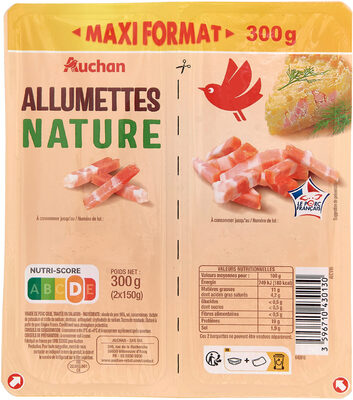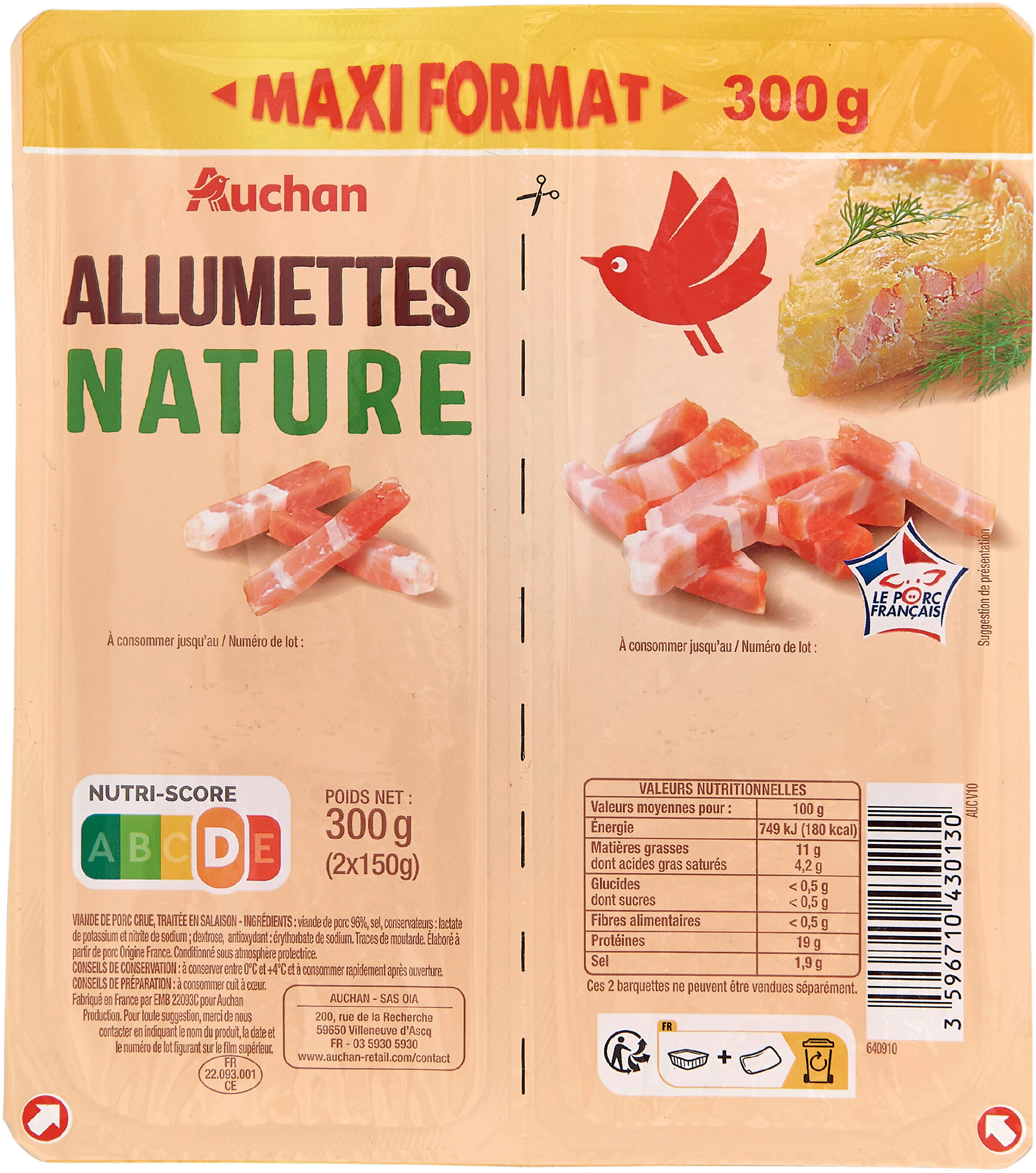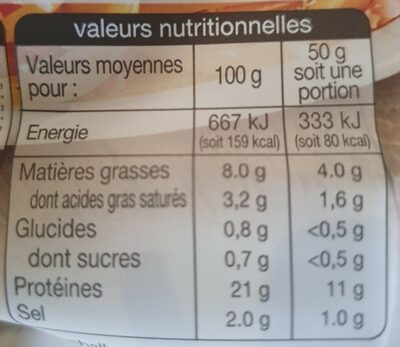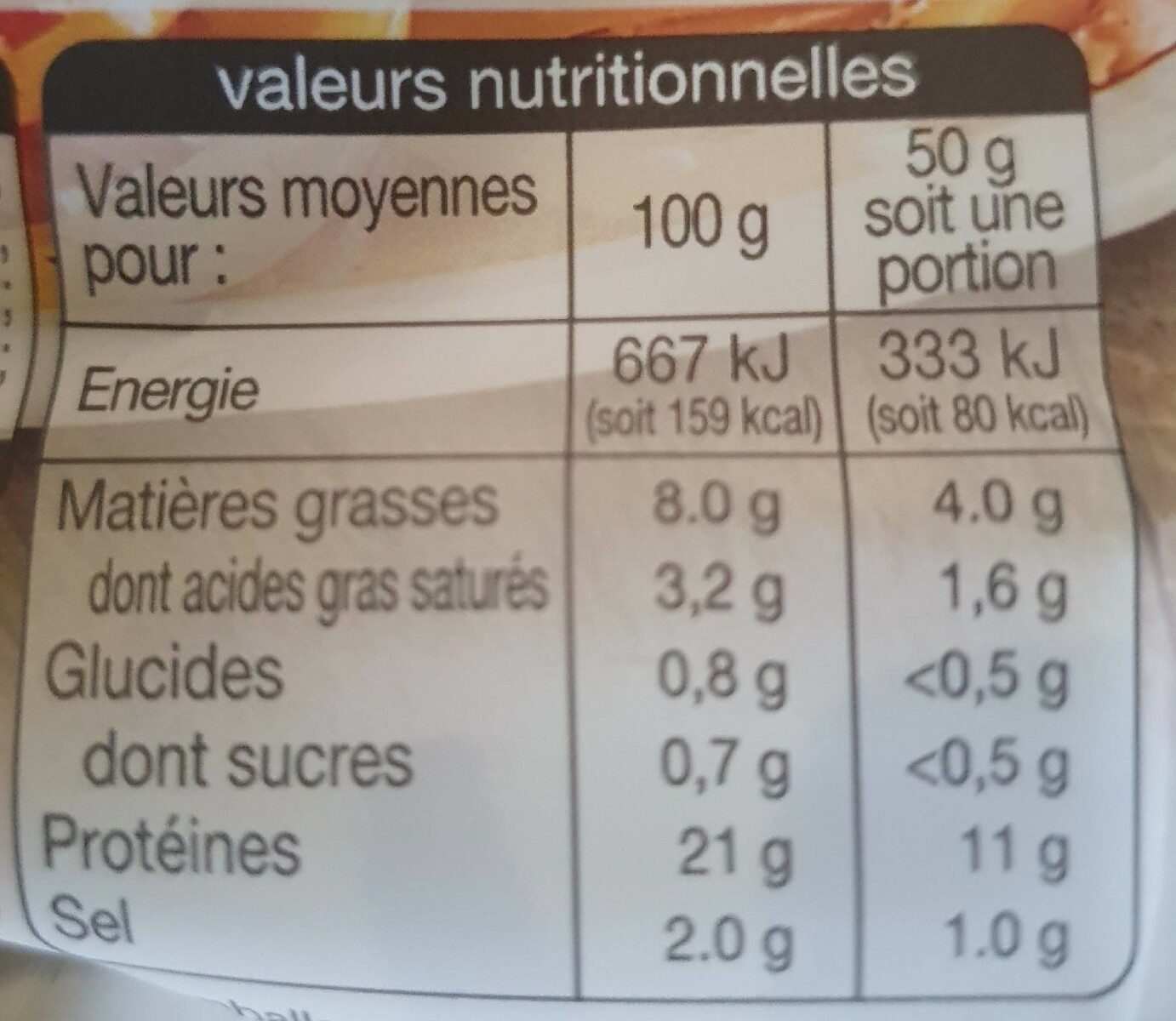Allumettes nature qualité supérieure - Auchan - 0.3 kg
Some of the data for this product has been provided directly by the manufacturer AUCHAN APAW.
Barcode: 3596710430178 (EAN / EAN-13)
Common name: Viande de porc traitée en salaison nature qualité supérieure
Quantity: 0.3 kg
Packaging: fr:Barquette-plastique, fr:Film plastique
Brands: Auchan
Categories: Meats and their products, Meats, Prepared meats, fr:Charcuteries diverses, fr:Allumettes de porc, Lardons, fr:Allumettes nature
Labels, certifications, awards:
French meat, French pork, Made in France, Nutriscore, Nutriscore Grade D, Triman
Origin of ingredients: European Union
Manufacturing or processing places: France
Traceability code: FR 56.010.001 CE - Baud (Morbihan, France), EMB 56010B - Baud (Morbihan, France), FR 22.093.001 CE - Lamballe (Côtes-d'Armor, France), EMB 22093C - Lamballe (Côtes-d'Armor, France)
Link to the product page on the official site of the producer: http://www.auchan.fr
Stores: Auchan
Matching with your preferences
Other information
Preparation: à la poêle:A concommer cuit à coeur
Conservation conditions: A conserver entre 0 et +4°C
Report a problem
Data sources
The manufacturer AUCHAN APAW uses Agena3000 to automatically transmit data and photos for its products.
Product added on by kiliweb
Last edit of product page on by org-auchan-apaw.
Product page also edited by date-limite-app, forais, isabel626, openfoodfacts-contributors, packbot, quechoisir, quentinbrd, roboto-app, sandrinefossard, sasa, teolemon, yuka.Bp99ItybBPMaP_DriYUx0jSeE83NGfEIJ1kgow, yuka.CbBmLM-BId0PFsjj8aE37iKjBrjAEfNXRmALog, yuka.F4JGPNmEB8gkM8T7z7htwxOGH8XyKs1hB3oKoQ, yuka.HIphEuOWQd0EH8vt_qs03mfnBOXgE68JAS4qog, yuka.Jq5NEvuWIdEfA8vO9ZIJ_RWcK7jSM85nQGBSog, yuka.KqpcbM_aFpEfPfTWgKU-hTS7H-XnH_F1OXIDoQ, yuka.NIJrIsK3QJ17RcLtjq0v_mOLSfXeIaFXEXJXog, yuka.NKAZH9OZBM8DEMKPz4tq7CKbSb7DPdNEGX8MoQ, yuka.sY2b0xO6T85zoF3NwEKvln1-a9TkvS2aOBPgoWOv4vPeLYDBQMxJ05PRNKs.













